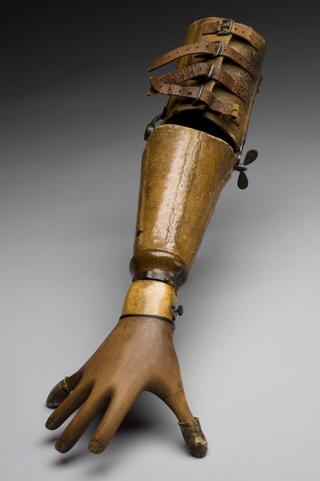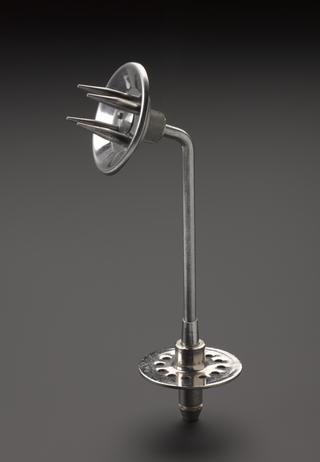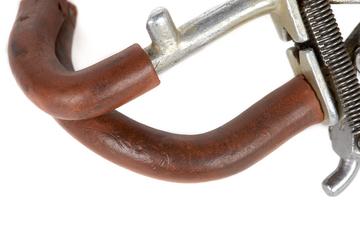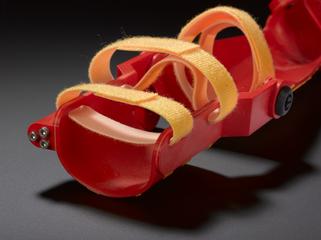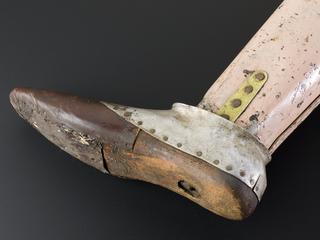
Pair of lower limb prostheses, Roehampton, England, 1959
- Made:
- 1959 in Roehampton




First pair of lower limb prostheses made for a 2 year old girl who was born with bilateral above elbow stumps and absence of both lower limbs (amelia). The sockets are made of 'durestos' and are mounted on short round peg ends with rubber soles. Made by Hanger in 1959.
These were the first pair of lower limb prostheses issued to a two year-old girl. She was born with a condition called amelia. This is an absence of both lower limbs. The prostheses were made in 1959 by Hanger, a company based at Queen Mary’s Hospital, Roehampton in west London. They consist of two separate sockets linked by four leather straps. They are made of a potentially harmful resinated asbestos material called durestos. Durestos was originally developed by the aeronautical industries. Its strength and lightness made it a perfect building material. Orthopaedic manufacturers adopted the material in the 1950s and 1960s for these same reasons.
Details
- Category:
- Orthopaedics
- Object Number:
- 1999-504
- Materials:
- fibreglass, leather and metal
- Measurements:
-
overall: 180 mm x 230 mm x 150 mm,
- type:
- artificial leg
- credit:
- Richmond Twickenham and Roehampton Healthcare NHS Trust
